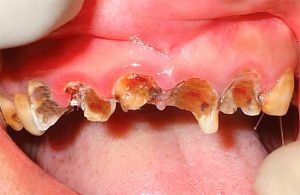 Caries is considered the most common dental disease, especially often seen in childhood. The onset of the disease is due to a change in the acid-base balance on the surface of the enamel. This is due to fermentation, caused by various microorganisms( karyiosis bacteria).
Caries is considered the most common dental disease, especially often seen in childhood. The onset of the disease is due to a change in the acid-base balance on the surface of the enamel. This is due to fermentation, caused by various microorganisms( karyiosis bacteria).
Blossoming acute caries is the most acute and rapidly progressing form of the disease.
Contents
- Terminology summary
- Decompensated form - and the whole world is small. ..
- Causes and risk groups
- Symptoms of the disease
- Diagnostic criteria and methods
- Medical care
- Possible complications and consequences
- Preventive measures
Short terminology
By the degree of defeat bloomingcaries belongs to a deep type. According to the nature of the course and the rate of development, the disease can take the form:
- acute and acute;
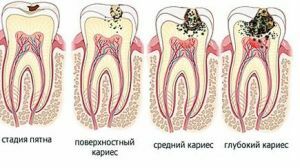
- suspended;
- chronic.
Blossoming caries refers to an acute form of lesion, which is characterized by a high rate of development. Acute caries, in turn, differ in the degree of destruction and intensity of development:
- Compensated .Develops slowly, without exacerbations. Symptoms are almost absent, tooth enamel is slightly affected.
- Subcompensated .Carious foci develop within a few months. At the initial stage, they do not manifest themselves at all, the symptoms are poorly expressed.
- Decompensated .Rapidly progressing and can cover several teeth at once. Development is accompanied by severe pain.
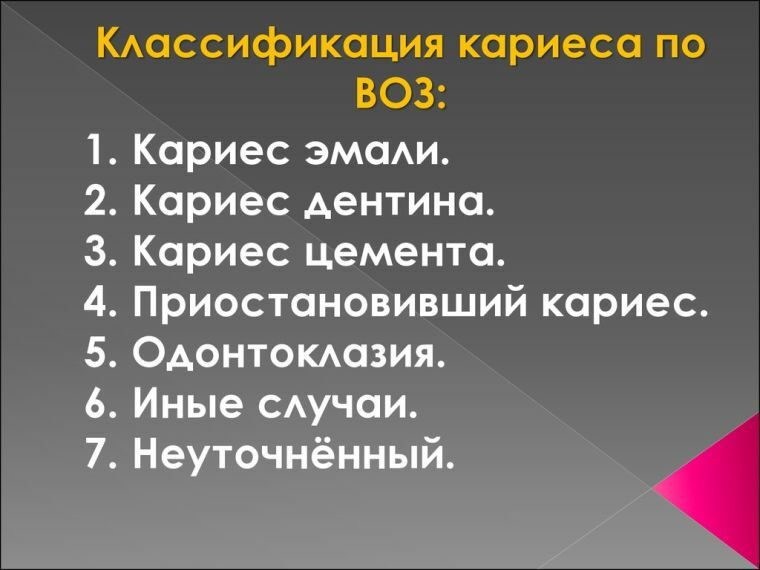
There are a lot of classifications of types and types of caries. This division is due to the nature of the current, intensity, speed of development and area of damage.
Decompensated form - and the whole world is small. ..
Decompensated caries is considered the most dangerous, requires immediate treatment. There are other names that accurately characterize this form of the disease: flowering or multiple acute caries.
The process of infection and destruction takes place in a very short time. As a rule, several teeth are affected at once. For a month the sick tooth is completely destroyed.
For the decompensated form of the disease is characterized by the formation of a deep carious cavity, having a narrow entrance and a wider base. This means that the surface of the teeth is almost not destroyed, and the internal tissues of the tooth are damaged more strongly. The base of the cavity and the wall are filled with strongly softened dentin.
The peculiarity of this carious process is that there is no response to inflammation and infection of teeth in the body. There are no obstacles to the rapid development of the lesion, so the disease proceeds quickly and aggressively.
Causes and risk groups
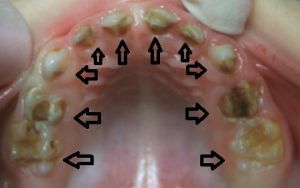
Foci of defeat decrees arrows
Blossoming caries can develop as primary, due to the progression of the middle form of the disease, and again, on the sealed tooth. Causes a carious process of bacteria( streptococci).
During the fermentation of food in the oral cavity, lactic acid forms, which damages the enamel, allowing bacteria to enter the inside of the tooth. They penetrate into the dentin, provoking the withdrawal of calcium salts. This leads to softening and destruction of hard tooth tissues.
Carious bacteria reproduce in plaque. If it is not removed, the disease begins to progress rapidly. The main causes of acute caries are as follows:
- persistent immune system disorders;
- a meager diet with a deficiency of trace elements;
- severe shortage of calcium and fluoride in the body;
- beriberi of varying degrees;
- decrease in bactericidal properties of saliva;
- disturbance of body metabolic processes;
- the presence of chronic diseases.
To provoke an exacerbation, speeding up the process of the disease, can improper oral care( non-hygiene) and bad habits. The most frequent form of the disease is children, especially during the period of growth of milk teeth. Also in the risk zone may be:
- adolescents, during hormonal changes in the body;
- children suffering from tuberculosis or other serious infectious diseases;
- patients with impaired absorption of microelements, especially calcium;
- patients with HIV infection who have decreased immunity;
- elderly people having various chronic diseases.
Patients who are at risk should be examined on time.
Symptoms of the disease
The main clinical manifestation of the sharpest form of caries is the pain syndrome, which is acute. It appears, as an  rule, for a short time.
rule, for a short time.
It can become a response to stimuli of various types: temperature, mechanical, chemical. If the carious cavity is filled with food remains, then aching pain lasts a long time. Also the main symptoms of a thriving disease are:
- bad breath;
- plaque, plentifully covering the teeth, which quickly form again after cleansing the oral cavity;
- drops fillings, as the process of destruction quickly develops under them;
- the patient has a viscous and slippery saliva that does not clean the teeth.
There are a number of other features that make it easy to identify the acute form of caries:
- can be visualized at a different stage of development with multiple foci on one tooth;
- appearance on the surface of enamel tooth enamel stains or change in the color of the enamel in a gray tint.
Most of the symptoms are pronounced. They can be seen without a qualified inspection.
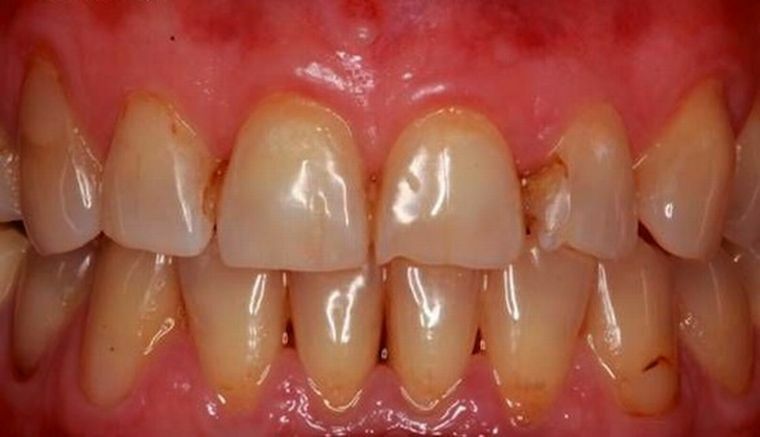
Diagnostic criteria and methods
To diagnose a dentist, using a special mirror and dental probe, examines the oral cavity. When probing an infected tooth, there is a sharp pain. During the examination, the dentist establishes and identifies: the degree of destruction of the tooth surface by the
- ;
- depth of carious cavity;
- pain response to temperature, by thermal exposure;
- pulp reaction to current, using electrodontodiagnostics.
To determine a more accurate diagnosis and to determine the size of the lesion, X-rays and radiovisiography are assigned.
Medical care
Treatment of acute caries takes place in several stages. It is aimed at the complete removal of damaged tissues and preservation of the healthy area of the tooth. The whole procedure is performed using modern equipment. Treatment includes the following:
- Initial inspection of .To properly assess the condition of patients with teeth, as well as their number.
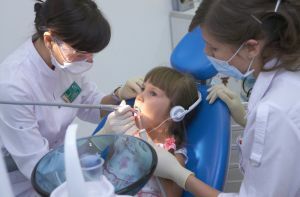
- Local anesthesia .An anesthetic injection is placed in the gingival mucosa near the affected tooth, after a couple of minutes, anesthesia is injected under the periosteum.
- Cleaning of the tooth cavity .Using a drill and a special tool, completely remove the infected( dead) tissue. Carefully clean the edges of the cavity from damaged enamel and dentin.
- The inside of the tooth is treated with antiseptic drugs .The condition of the cavity is re-analyzed, and the place for the filling is formed.
- If necessary, remove the nerve, clean the channels of .
- Installation of the treatment pad .It consists of drugs based on calcium and has a bactericidal effect.
- To insulate the seal from the treatment pad, use an insulating pad.
- Sealing .Establish a temporary or permanent seal. It depends on each case. If the walls of the treated tooth are thick enough, the filling is carried out at a time. Most often, the treatment is carried out with the installation of a temporary seal. The decision is made by the dentist. The basis for this or that option is: the condition of the tooth to be filled and the presence of pain symptoms after cleaning the cavity.
Possible complications and consequences of
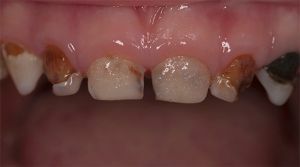 After the treatment, within a few days, there may be increasing pain. This indicates the damage to the pulp and the possible development of inflammation - pulpitis. In this case, the seal is removed and the affected pulp is removed, followed by root canal filling. If possible, clean only the upper part of the pulp.
After the treatment, within a few days, there may be increasing pain. This indicates the damage to the pulp and the possible development of inflammation - pulpitis. In this case, the seal is removed and the affected pulp is removed, followed by root canal filling. If possible, clean only the upper part of the pulp.
Immediately call a specialist in the following cases:
- aching permanent pain, not removed by analgesics;
- swelling or redness of the gums near the sealed tooth;
- the wrong size of the seal, which provokes soreness.
Complications can be avoided if treatment is conducted in a high-quality and timely manner.
Preventive measures
For the preservation of teeth, especially in the presence of disease in the initial form, it is very important to carry out prevention. The main preventive measures include:
- it is necessary to clean teeth at least twice a day;
- use special anti-inflammatory toothpaste against caries;
- use dental floss, cleaning interdental spaces;
- rinse the mouth after each meal;
- observe the temperature conditions;
- restrict the consumption of sweet and soft foods.
Carrying out qualitative preventive maintenance it is possible to keep healthy teeth for a long time. The most important thing is to visit a dentist on time to identify and treat tooth decay in the early stages.
